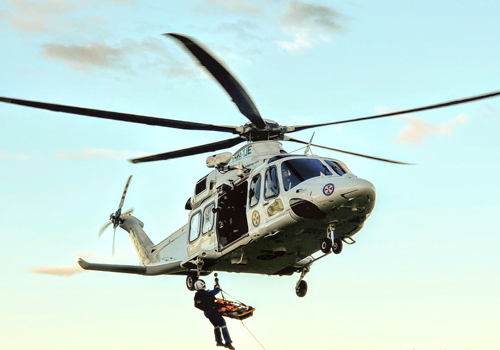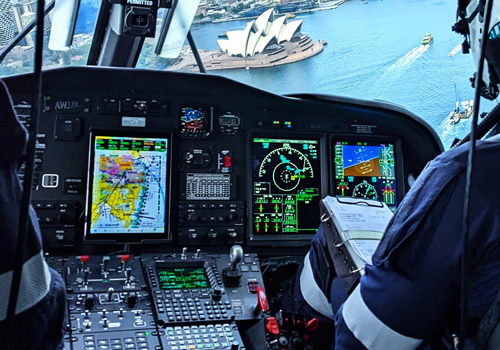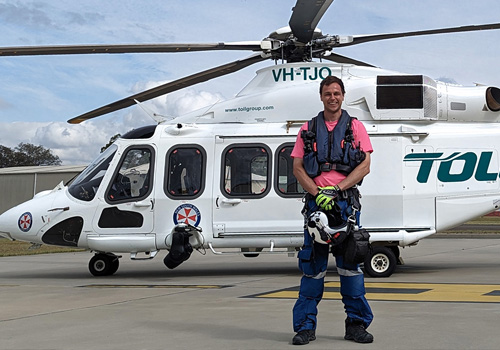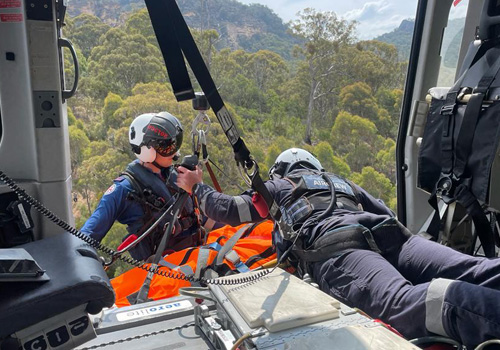When you think of a doctor, you probably think of clinics, waiting rooms and walls of equipment. But what about helicopters, hiking, climbing steep rocks and rappelling?
That’s where The University of New Mexico International Mountain Medicine Center (IMMC) comes in. They equip medical providers and rescue teams, across the globe, with the necessary training and tools to save lives in places where police cars and firetrucks cannot always reach.
New Mexico, well-known for its beautiful trails, majestic mountains and outdoor scenery is a perfect training ground because, as first responders know well, anything can go wrong when people are out exploring.
“People sometimes become lost,” said IMMC director Jason Williams, DiMM. “They are not prepared for the environment. So, we could see things like heat illness, if it is very hot, or hypothermia, if it is very cold.”
Williams listed other potential medical emergencies like dehydration, twisted ankles, broken bones, heart attacks and altitude sickness. In the outdoors, these otherwise treatable ailments can mean the difference between life and death, which is why Williams’ job is so important.
“We have been teaching various wilderness medicine courses through the Department of Emergency Medicine at UNM, going on 30 years,” he said. “But we started more formalized programs—really anything from wilderness first aid to community members, all the way up to our diploma in mountain medicine for healthcare professionals since 2015.”
Williams added, on average, five to six people are injured in New Mexico mountain areas each month; one to two in the Albuquerque area. Just one rescue can require a team of dozens to respond.
“If we have to put the person on a stretcher and carry them out of the environment, you are probably looking at a minimum of 10 people to do a rescue like that,” he said. “Commonly, you see anywhere from 20 to 30. Imagine a broken leg five miles up the La Luz trail. It takes a lot of time, effort and resources to be able to extricate that person. Obviously, a lot less if we involve the helicopter.”
IMMC’s goal is to properly prepare rescue agencies, fire, police and sheriff’s departments for those emergency situations.
In the past eight years, it has also become one of the top mountain emergency medicine and rescue programs in the world. Oscar Wigginton, MBChB, is one of several medical professionals to travel from another country to receive this training in New Mexico. He is currently based in Sydney, Australia.
“People can get sick anywhere, and it is very easy to think that you can just take the skills that you have in a hospital environment and apply them outside,” Wigginton said.
But rescuers with mountain medicine training possess an entirely different skillset to safely render aid and operate on patients outdoors. That includes working with limited resources, when some patients require immediate treatment. Providers also need to be able to hike, rock climb, and rappel with an injured person in tow.
“I have always been a keen climber,” Wigginton said. “I’ve always liked to use any excuse to combine work with things I love outside.”
As program fellows, Wigginton and his cohort must complete summer and winter training sessions. Each session begins with courses online, then ends with nine days of hands-on learning and real-world application in the rugged Sandia Mountains overlooking Albuquerque. Once they receive their diploma in mountain medicine, they can take what they learned back home and ultimately save more lives across the globe.

The work is difficult sometimes, but it is very rewarding being able to take the aspects of medicine—really high-level medicine—and providing that care to patients up in the mountains who are sometimes in a very bad way.
“It is totally exciting,” Williams said. “The work is difficult sometimes, but it is very rewarding being able to take the aspects of medicine—really high-level medicine—and providing that care to patients up in the mountains.”
Watch the video above to see the UNM International Mountain Medicine Center in action. To learn more about the program or how you can get involved, click here.




